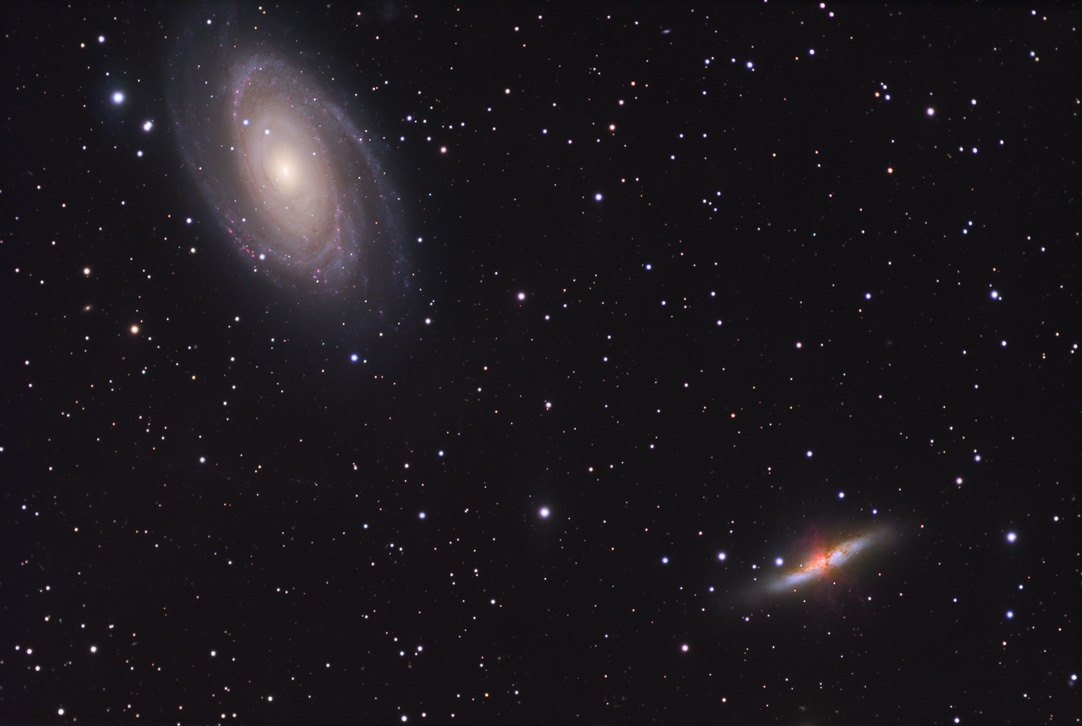

M81 and M82: These are two galaxies about 11 million light years from us (and about 150,000 light years apart, at present), which underwent a near-collision perhaps 600 million years ago, which triggered intense star-forming activity (starburst) in M82 (the smaller one, in the lower right of the picture). M81 also has many very active star-forming regions, many of which show up as the pink regions in the spiral arms. It is thought that the two are orbiting about each other every 100 million years or so, in an eccentric pattern which periodically brings them close together, triggering another episode of star formation. It is thought that they are approaching each other over time, and eventually will merge in a violent episode, in perhaps a few billion years. M81 (also known as "Bode's Nebula," after the man who discovered it--and M82--in 1774) has retained its spiral structure through the gravitational interactions with M82, while M82 has become rather indistinct in structure as a result. At 11 million light years away, M81 would be about 60,000 light years in diameter, while M82 would be about 25,000 light years in diameter/length. As a result of its starburst activity, M82 is one of the brightest infrared and radio sources in the sky.
Copyright 2007 Mark de Regt